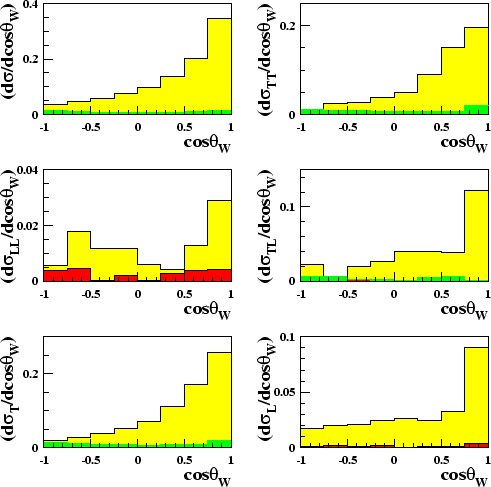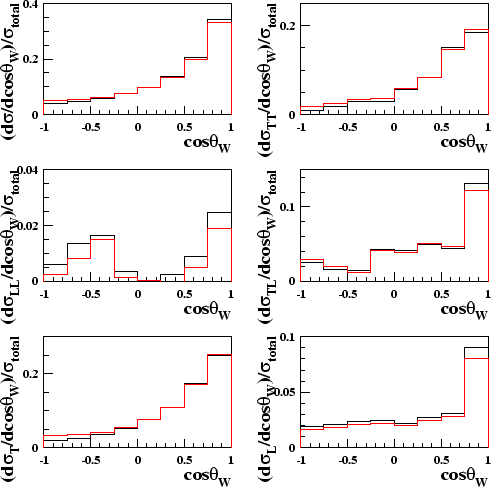 |
The expected contribution from background events needs to be subtracted from the data sample before the polarised cross-sections are measured, so that the true fraction of each polarisation state can be calculated. The expected accepted cross-section of each background type was given in chapter 5.
Figure 8.11 shows the contribution of background events to the polarised differential cross-sections. The background can have both a positive and negative contribution. This is indicated clearly in figure 8.12, which shows the normalised polarised differential cross-sections calculated from Monte Carlo with and without the expected background events.
 |
 |
Table 8.1 shows the values for the helicity fractions calculated from a large CC03 Monte Carlo sample and also a Monte Carlo sample containing the expected background events as well as the signal events. From this, it is clear that, although not as large a contributer as the detector effects, the background is an important consideration and must be corrected for.
The correction is achieved by adding the expected selected background Monte Carlo events to the data sample before the SDM analysis is undertaken. These Monte Carlo events are assigned a negative weight so that their contribution is effectively subtracted from the data sample.